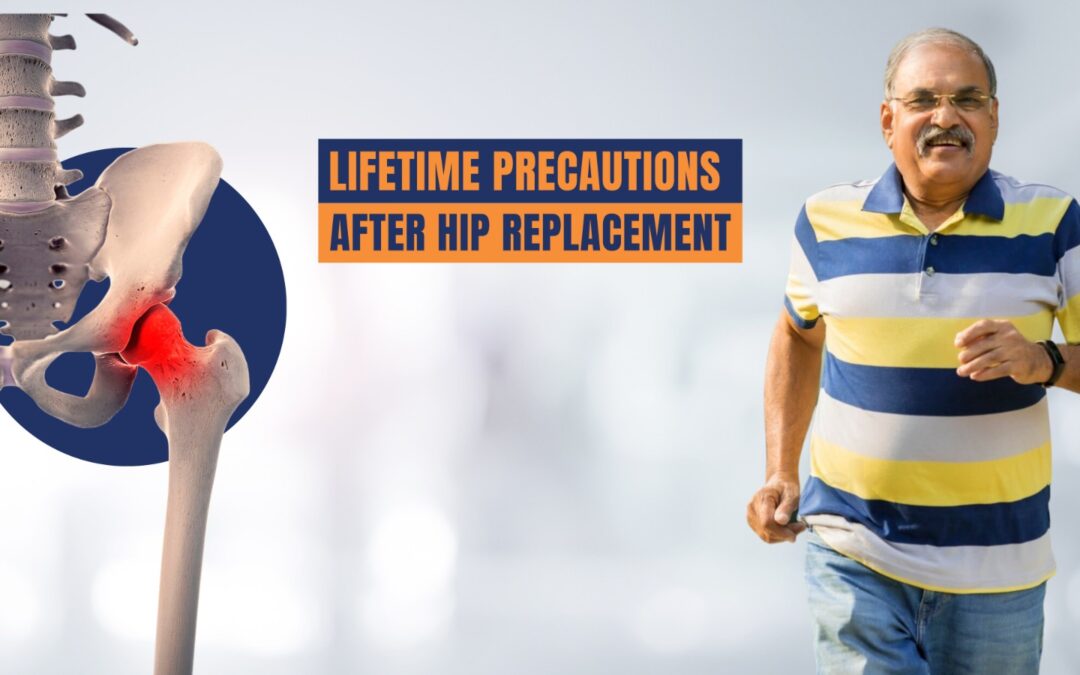Hip replacement surgery, also known as hip arthroplasty, is a common procedure performed to relieve pain and improve mobility in individuals suffering from severe hip joint damage. While the surgery can significantly enhance the quality of life, it’s important to understand and adhere to Lifetime Precautions After Hip Replacement certain precautions and guidelines for a lifetime after the procedure. In this article, we will explore the adjustments necessary to ensure a successful and long-lasting outcome post hip replacement.
Introduction – Lifetime Precautions After Hip Replacement
Hip replacement surgery is a transformative procedure that can greatly improve the quality of life for individuals with chronic hip pain. However, post-surgery precautions are vital to ensure the new hip joint’s longevity and functionality.
Understanding Hip Replacement Surgery
Hip replacement involves removing the damaged joint and replacing it with an artificial implant. The surgery addresses issues like arthritis, fractures, and other conditions affecting the hip joint’s normal functioning.
Initial Recovery Phase
The immediate post-surgery phase involves hospitalization and supervised rehabilitation. Patients should follow medical advice diligently, including wound care and medication schedules.
Long-Term Precautions
4.1 Lifetime Precautions After Hip Replacement
Proper body mechanics are crucial to prevent dislocation of the new hip joint. Avoid crossing legs, bending deeply at the hip, or making sudden, jerky movements.
4.2 Maintaining a Healthy Weight
Maintaining a healthy weight reduces stress on the new hip joint, decreasing the risk of premature wear and loosening.
4.3 Regular Exercise Routine
Engaging in a customized exercise routine recommended by a physical therapist helps strengthen surrounding muscles, improving joint stability and overall mobility.
4.4 Avoiding High-Impact Activities
High-impact activities like running and jumping should be avoided, as they can lead to implant damage or loosening over time.
Importance of Physical Therapy
Physical therapy plays a vital role in restoring range of motion, enhancing muscle strength, and improving flexibility. Regular sessions with a therapist are essential during the recovery period.
Nutritional Considerations for Healing
A balanced diet rich in calcium and vitamin D supports bone health and aids in the healing process. Consult a nutritionist for a diet plan tailored to your needs.
Managing Discomfort and Pain
Mild discomfort is normal during the recovery phase. Pain management techniques, such as prescribed medications and ice therapy, should be followed as advised by your medical team.
Dental Precautions
To prevent the risk of infection, antibiotics may be required before dental procedures. Consult your surgeon and dentist for guidance.
Traveling After Hip Replacement
Traveling is possible after recovery, but precautions should be taken. Use supportive cushions for seating during long journeys and practice leg movements to improve circulation.
Returning to Work and Daily Activities
Returning to work and daily activities should be gradual. Discuss any concerns with your surgeon and make necessary adjustments to your workspace.
Maintaining Emotional Well-being
The recovery process can be emotionally challenging. Seeking support from friends, family, or a therapist can help in managing stress and anxiety.
Signs of Complications
12.1 Infection
Persistent fever, redness, swelling, or discharge from the incision site could indicate an infection. Seek medical attention promptly.
12.2 Blood Clots
Swelling, pain, or tenderness in the calf or thigh may signal a blood clot. Contact your healthcare provider if you experience these symptoms.
12.3 Implant Loosening
If you notice persistent pain, instability, or a change in the hip’s range of motion, consult your surgeon as it could be a sign of implant loosening.
Follow-up Appointments and Monitoring
Regular follow-up appointments with your surgeon are crucial to monitor the implant’s condition and address any concerns promptly.
Support System and Communication
Maintain open communication with your medical team, and lean on your support system for emotional and physical assistance during your recovery journey.
Conclusion
A successful hip replacement surgery can provide immense relief and restore your mobility. By following the outlined precautions and guidelines, you can enjoy a fulfilling life while minimizing the risk of complications and ensuring the longevity of your new hip joint.
FAQs
1 . When can I return to normal daily activities after hip replacement surgery?
Gradual return to normal activities is recommended. Consult your surgeon for personalized guidance based on your progress.
2. Is it safe to travel by air after hip replacement surgery?
Traveling is possible, but consult your surgeon for specific precautions, such as exercises during the flight and using cushions for support.
3. Can I participate in low-impact exercises like swimming?
Yes, low-impact exercises like swimming can be beneficial. Consult your physical therapist for appropriate exercises and timing.
4. Are there any long-term dietary restrictions post-surgery?
Consult a nutritionist for dietary recommendations, but generally, a balanced diet with adequate nutrients is important for healing.
5. What should I do if I experience sudden pain or discomfort in the replaced hip?
Contact your surgeon immediately to rule out any complications or issues with the implant.


